
Barbara Stanwyck was an American actress, model and dancer. A stage, film, and television star, during her 60-year professional career she was known for her strong, realistic screen presence and versatility. She was a favorite of directors, including Cecil B. DeMille, Fritz Lang, and Frank Capra, and made 85 films in 38 years before turning to television.

Ball of Fire is a 1941 American screwball comedy film directed by Howard Hawks and starring Gary Cooper and Barbara Stanwyck. The Samuel Goldwyn Productions film concerns a group of professors laboring to write an encyclopedia and their encounter with a nightclub performer who provides her own unique knowledge. The supporting cast includes Oscar Homolka, S. Z. Sakall, Henry Travers, Richard Haydn, Dana Andrews, and Dan Duryea.

Confidentially Yours is a 1983 French comedy mystery film directed by François Truffaut. Based on the 1962 novel The Long Saturday Night by American author Charles Williams, it tells the story of Julien Vercel, an estate agent who is suspected of murdering his wife and her lover. As Vercel is hidden in his office, his secretary Barbara Becker investigates these suspicious murders. It was the last film directed by Truffaut before his death in October of the following year. The film had a total of 1,176,425 admissions in France and was the 39th highest-grossing film of the year.

The Big Valley is an American Western television series that originally aired from September 15, 1965, to May 19, 1969 on ABC. The series is set on the fictional Barkley Ranch in Stockton, California, from 1884 to 1888. The one-hour episodes follow the lives of the Barkley family, one of the wealthiest and largest ranch-owning families in Stockton, led by matriarch Victoria Barkley, her sons Jarrod and Nick, daughter Audra, and their half-brother Heath. The series was created by A.I. Bezzerides and Louis F. Edelman, and produced by Levy-Gardner-Laven for Four Star Television.
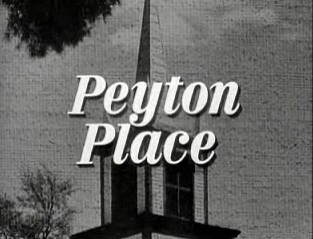
Peyton Place is an American prime-time soap opera that aired on ABC in half-hour episodes from September 15, 1964, to June 2, 1969.
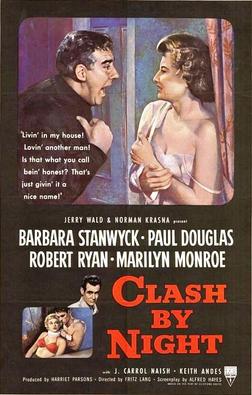
Clash by Night is a 1952 American film noir drama directed by Fritz Lang and starring Barbara Stanwyck, Paul Douglas, Robert Ryan, Marilyn Monroe and Keith Andes. The film is based on the 1941 play by Clifford Odets, adapted for the screen by writer Alfred Hayes. It is the first major film to credit Monroe before the title, albeit with fourth billing.

My Reputation is a 1946 American romantic drama film directed by Curtis Bernhardt. Barbara Stanwyck portrays an upper-class widow whose romance with an army officer causes trouble for her gossiping friends, domineering mother and young sons. Catherine Turney wrote the script, an adaptation of Clare Jaynes' 1942 novel Instruct My Sorrows. Stanwyck's costumes were designed by Edith Head.
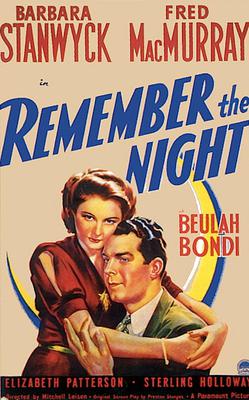
Remember the Night is a 1940 American Christmas romantic comedy trial film starring Barbara Stanwyck and Fred MacMurray and directed by Mitchell Leisen. The film was written by Preston Sturges and was the last of his scripts shot by another director, as Sturges began his own directorial career the same year with The Great McGinty.
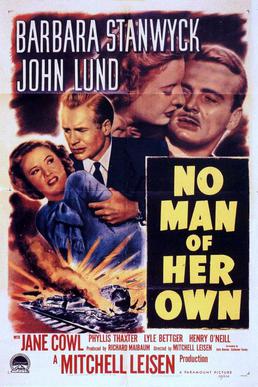
No Man of Her Own is a 1950 American film noir drama directed by Mitchell Leisen and featuring Barbara Stanwyck, John Lund, Phyllis Thaxter, Jane Cowl and Lyle Bettger. Made and distributed by Paramount Pictures, the production is the second film Stanwyck made with director Mitchell Leisen. Its screenplay was adapted from Cornell Woolrich's 1948 novel I Married a Dead Man. Woolrich is cited in the film's opening credits by one of his commonly used pseudonyms, "William Irish".

Gambling Lady is a 1934 American pre-Code romantic drama film directed by Archie Mayo, and starring Barbara Stanwyck, Joel McCrea and Pat O'Brien.
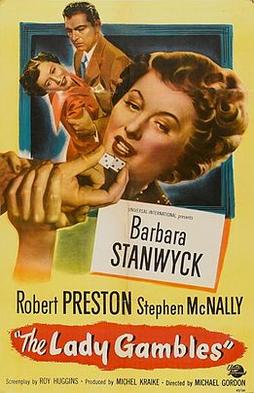
The Lady Gambles is a 1949 American film noir drama film directed by Michael Gordon and starring Barbara Stanwyck, Robert Preston and Stephen McNally.

Stella Dallas is a 1937 American drama film based on Olive Higgins Prouty's 1923 novel of the same name. It was directed by King Vidor and stars Barbara Stanwyck, John Boles, and Anne Shirley. At the 10th Academy Awards, Stanwyck and Shirley were nominated for Best Actress in a Leading Role and Best Actress in a Supporting Role, respectively.

The Scarlet Hour is a 1956 American film noir crime film directed and produced by Michael Curtiz, and starring Carol Ohmart, Tom Tryon, and Jody Lawrance. It was distributed by Paramount Pictures. Curtiz had previously directed such noted films as Casablanca, Yankee Doodle Dandy, and White Christmas. The screenplay was based on the story "The Kiss Off" by Frank Tashlin. The song "Never Let Me Go", written by Jay Livingston and Ray Evans, is performed by Nat King Cole. UCLA has an original 16 mm copy of the film in its Film and Television Archive.

The Plough and the Stars is a 1937 American drama film directed by John Ford and starring Barbara Stanwyck and Preston Foster. It is based on the play of the same name written by Seán O'Casey.
Red Salute is a 1935 American comedy film directed by Sidney Lanfield and starring Barbara Stanwyck and Robert Young. Based on a story by Humphrey Pearson, the film is about the daughter of a US Army general who becomes involved with a suspected communist agitator.

This Is My Affair is a 1937 American period crime film directed by William A. Seiter and starring Robert Taylor, Barbara Stanwyck, Victor McLaglen and Brian Donlevy. It was produced and released by 20th Century Fox.

Ten Cents a Dance is a 1931 American pre-Code romance-drama film directed by Lionel Barrymore and starring Barbara Stanwyck as a married taxi dancer who falls in love with one of her customers. The film was inspired by the popular song of the same name, which is sung over the title sequence. The film was also made in a Spanish language version, titled, Carne de Cabaret, directed by Christy Cabanne.

The Night Walker is a 1964 American psychological horror film directed and produced by William Castle, written by Robert Bloch, and starring Robert Taylor, Judith Meredith, Lloyd Bochner and Barbara Stanwyck in her final theatrical film role. It follows the wife of a wealthy inventor who is plagued by increasingly disturbing nightmares, which escalate after her husband's death. It was the final black and white film made by Universal Pictures.
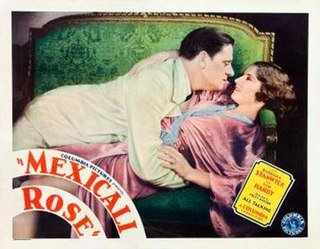
Mexicali Rose is a 1929 American pre-Code romantic drama film directed by Erle C. Kenton, and starring Barbara Stanwyck and Sam Hardy. A silent and sound version are preserved at the Library of Congress.
Good Girls Go to Paris is a 1939 American romantic comedy film starring Melvyn Douglas and Joan Blondell.


















